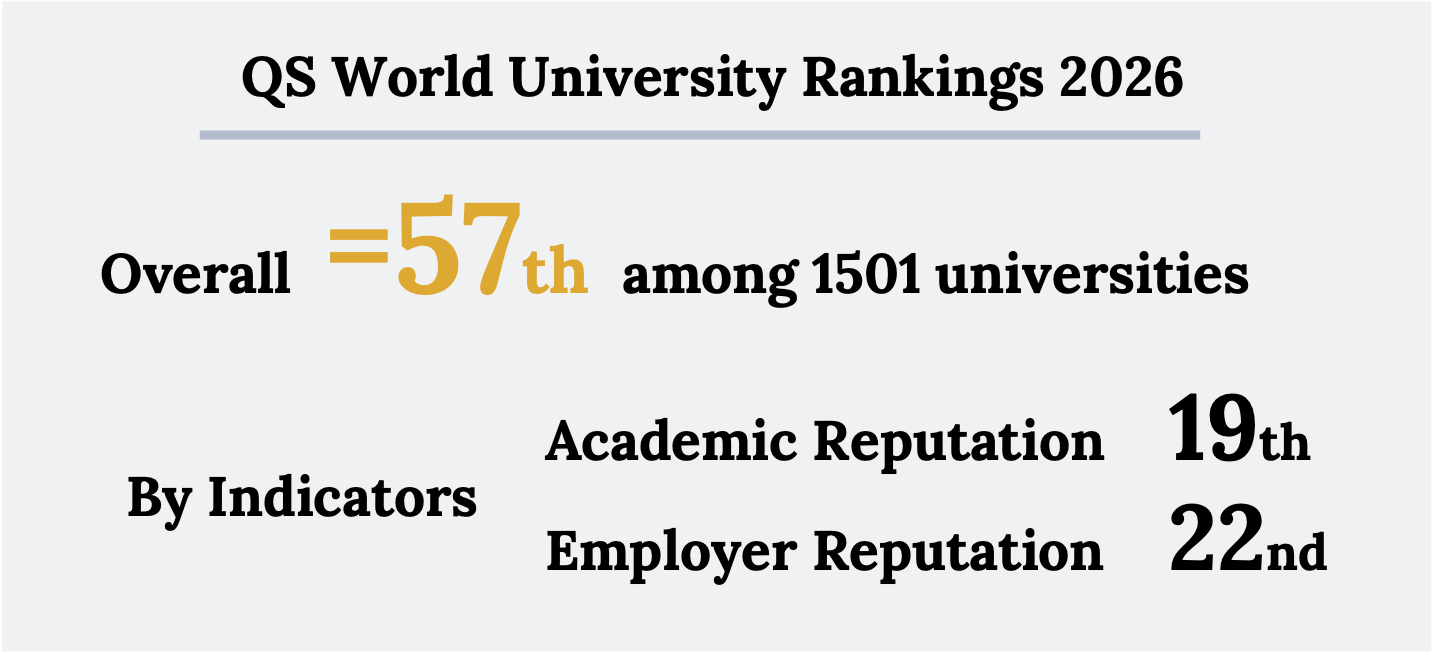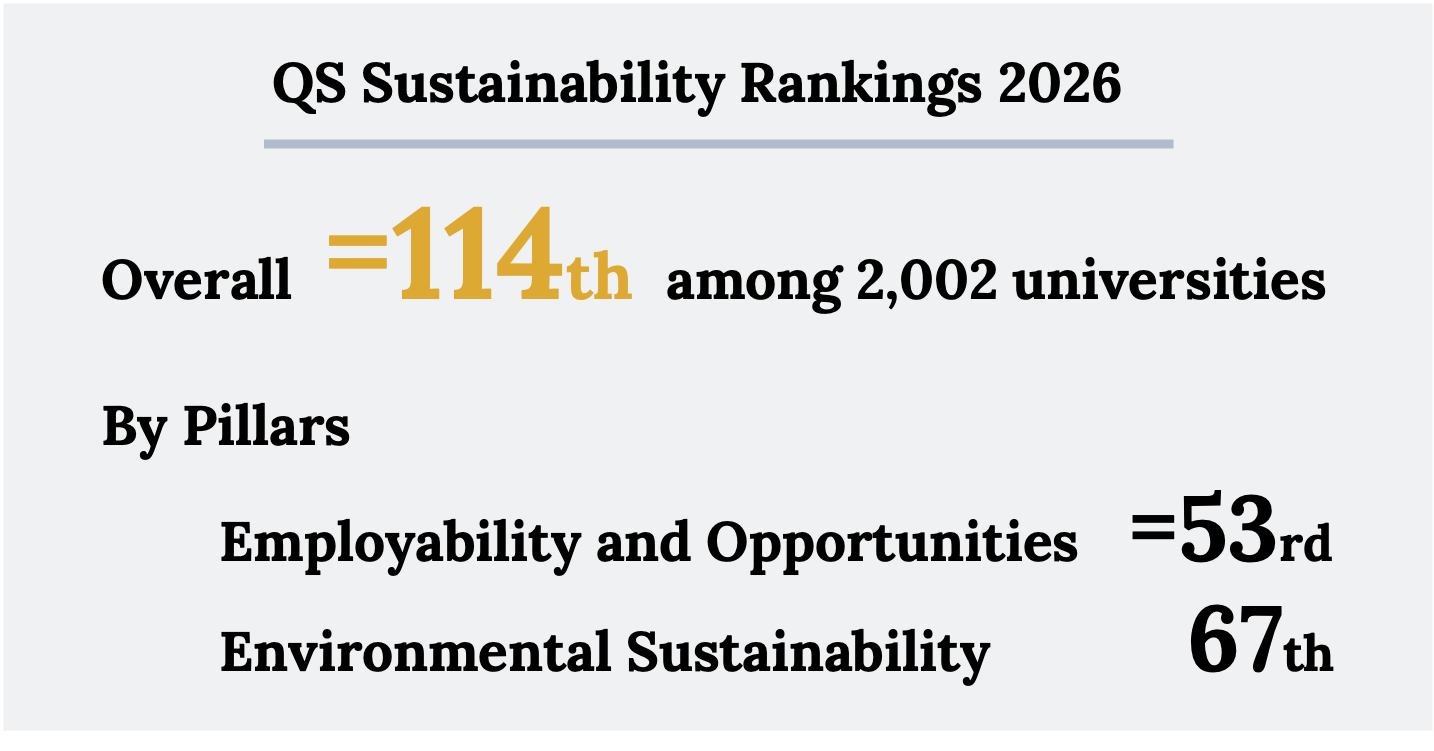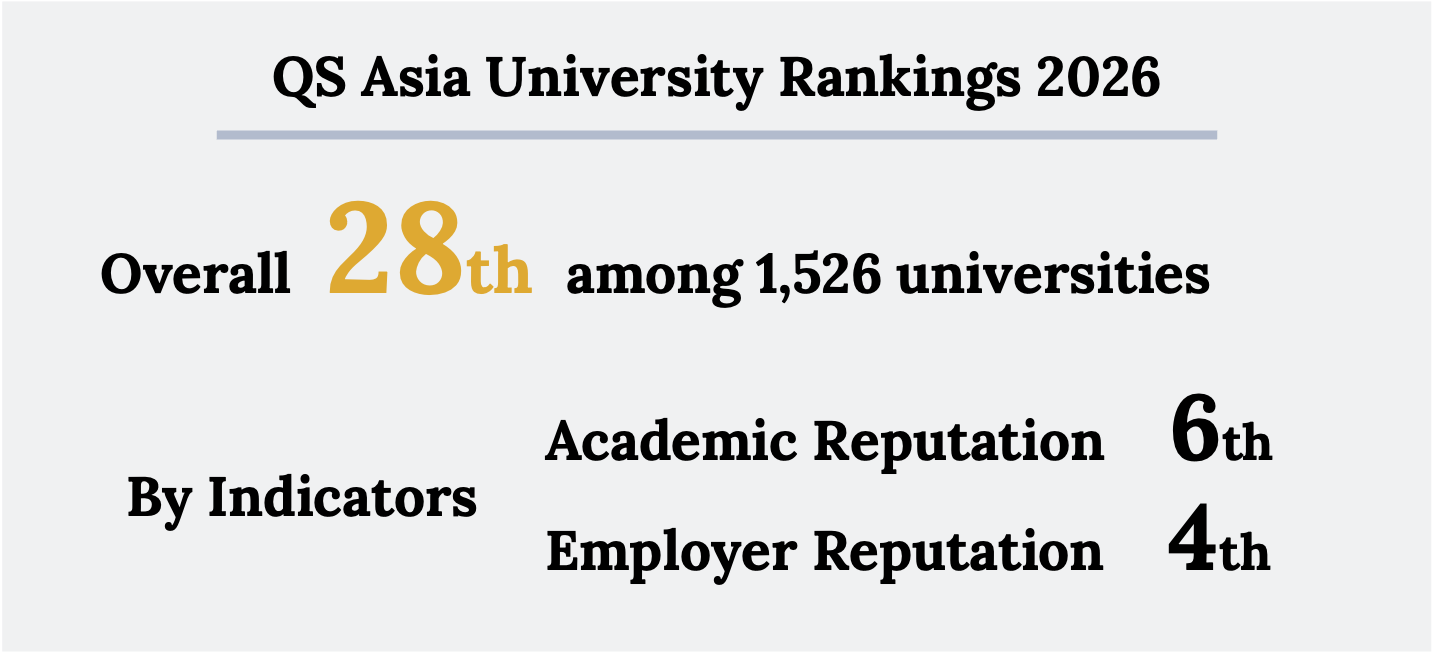QS World University Rankings

The QS World University Rankings have been published annually by Quacquarelli Symonds (QS) since 2004. The overall ranking score of each university is calculated by methodology based on the aggregation of nine weighted indicators.
QS World University Rankings Official Website
Results
In June 2025, the QS World University Rankings 2026 were announced. A total of 1,501 universities from 106 countries and regions were ranked, and Kyoto University was placed joint 57th, placing the university within the top 5% worldwide. Among Japanese universities, four made it into the top 100, with Kyoto University ranking second in Japan.
In terms of individual indicators, Kyoto University received particularly high evaluations for its Academic Reputation (19th globally) and Employer Reputation (22nd globally).

Methodology
| Indicator | Weighting |
|---|---|
| Academic Reputation | 30% |
| Citations per Faculty | 20% |
| Employer Reputation | 15% |
| Employment Outcomes | 5% |
| Faculty Student Ratio | 10% |
| International Faculty Ratio | 5% |
| International Research Network | 5% |
| International Students Ratio | 5% |
| Sustainability | 5% |
QS Sustainability Rankings

QS is a ranking dedicated to the sustainability of universities, published by QS since 2022. It assesses a university's social impact, environmental impact, and governance, and how it is taking action to address the world's most pressing environmental and social issues.
QS Sustainability Rankings Official Website
Results
In November 2025, the QS Sustainability Rankings 2026 were released, ranking 2,002 universities from 108 countries and regions, with Kyoto University tied for 114th overall.
Kyoto University received high marks for its contribution to environmental sustainability and the development of human resources who can play an active role in society, including a reputation survey among employees in particular.

Methodology
| Categories | Performance Lenses | Weighting |
|---|---|---|
| Environmental Impact (45%) |
Environmental Sustainability | 15% |
| Environmental Education | 17% | |
| Environmental Research | 13% | |
| Social Impact (45%) |
Equality | 12% |
| Knowledge Exchange | 10% | |
| Impact of Education | 7% | |
| Employability and Opportunities | 11% | |
| Health and Wellbeing | 5% | |
| Governance | Good Governance | 10% |
QS Asia University Rankings
The QS Asia University Rankings are regional rankings of Asian universities published annually since 2009. They use a similar evaluation method to the QS World University Rankings but with several additional indicators. The indicators are recalibrated to reflect the characteristics of the region.
QS Asia University Rankings Official Website
Results
The QS Asia University Rankings 2026 were published in November 2025. Kyoto University was ranked 28th among 1,526 universities.
Kyoto University was particularly highly evaluated in the "Academic Reputation" (6th) and "Employer Reputation" (4th) indicators.

Methodology
| Indicator | Weighting |
|---|---|
| Academic Reputation | 30% |
| Employer Reputation | 20% |
| Faculty Student Ratio | 10% |
| International Research Network | 10% |
| Citations per Paper | 10% |
| Papers per Faculty | 5% |
| Staff with a PhD | 5% |
| Proportion of International Faculty | 2.5% |
| Proportion of International Students | 2.5% |
| Proportion of Inbound Exchange Students | 2.5% |
| Proportion of Outbound Exchange Students | 2.5% |

